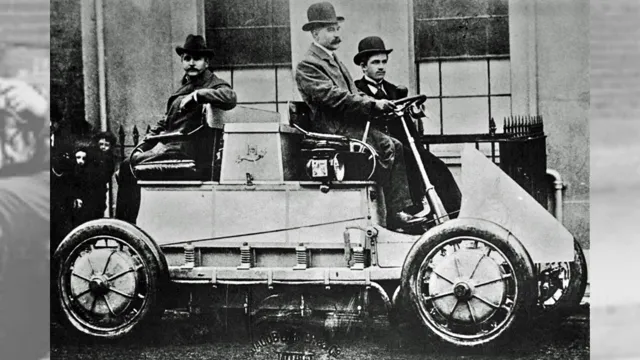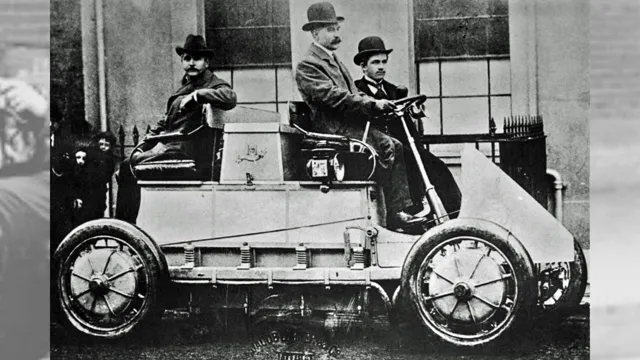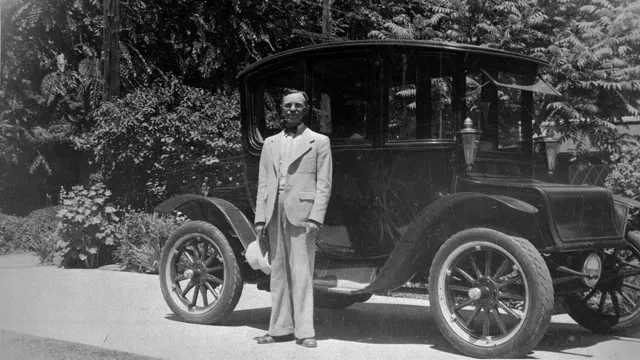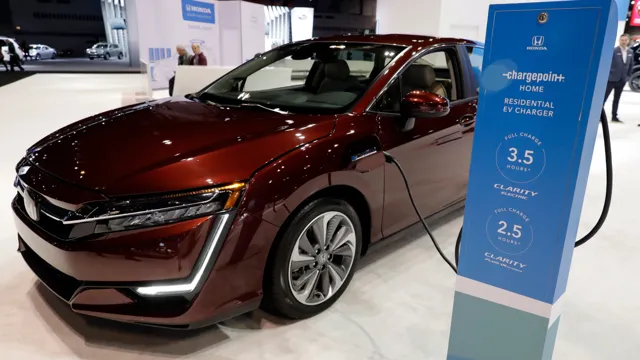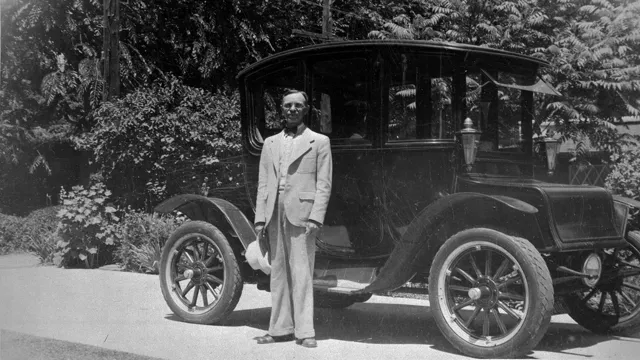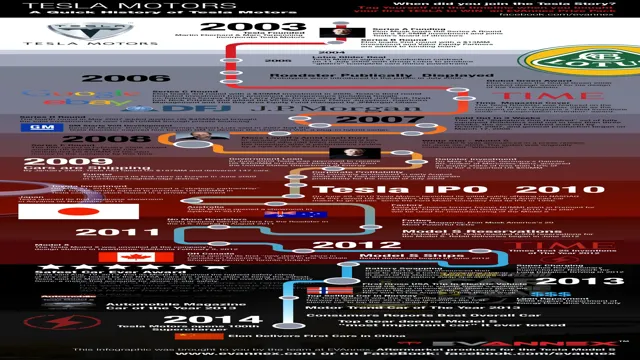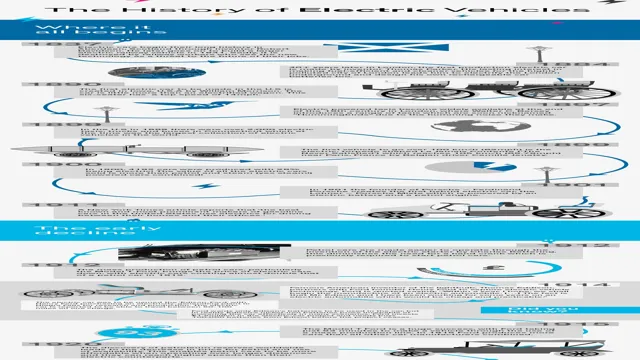A Shocking Evolution: Tracing the Fascinating History of Electric Cars
Electric cars are becoming increasingly popular in modern times, and there is a history behind these sustainable vehicles that is both fascinating and often overlooked. The concept of electric cars dates back to the early 1800s when inventors first started experimenting with battery-powered vehicles. However, it wasn’t until the 21st century that electric cars began to gain traction as a viable alternative to gas-powered vehicles.
Today, electric cars are more efficient, affordable, and environmentally friendly than ever before. Here is a closer look at the history of electric cars and how they have evolved over the years.
Early Electric Cars
The history of electric cars dates back to the early 19th century when inventors began experimenting with electric power for transportation. In fact, the first electric car was built in 1828 by Anyos Jedlik, a Hungarian inventor. However, it wasn’t until the late 1800s that electric cars started becoming more popular.
In the early 1900s, electric cars were a common sight on the streets of major cities, with taxis and even some police departments using them. Electric cars were practical and easy to drive, but the invention of the gasoline engine eventually led to their decline in popularity. Despite this setback, electric cars continued to evolve and improve, and today they are making a comeback as more people seek out eco-friendly and sustainable transportation options.
Invention of Electric Cars in 1800s
Electric cars may seem like a recent innovation, but they were actually first invented in the 1800s. Early electric cars were created in the late 1800s and early 1900s, and they were popular for a time before gasoline-powered vehicles took over the market. At the time, electric cars were considered a luxury item and were often used by wealthy individuals.
However, they were also popular with women, as they were cleaner and easier to operate than gasoline-powered vehicles. Thomas Davenport is credited with creating the first electric car in 1837, though it was not until the late 1800s that electric cars became more popular. These early electric cars had a limited range and were not as powerful as gasoline-powered vehicles, but they were still an important step forward in the development of electric transportation.
Today, the electric car market is growing rapidly, and many companies are investing heavily in the development of electric vehicles.

Growth of Electric Cars in 1900s
The early 1900s saw the rise of electric cars, and they quickly became a popular mode of transportation for some people. These early electric cars were simple, yet efficient, and they were often marketed to women because they were easier to operate than the gas-powered cars of the time. However, their popularity was short-lived due to several factors, such as the lack of charging infrastructure and the high cost of production.
The burstiness of electric cars during this time period meant that they showed great potential, but due to the lack of support, they were unable to maintain their growth. Nevertheless, the history of electric cars during this time period laid the foundation for future advancements in technology and infrastructure that would ultimately lead to the resurgence of electric cars in the modern era.
Decline of Electric Cars
The history of electric cars dates back to the early 1830s when Robert Anderson developed the first electric carriage. However, it wasn’t until the late 1800s that electric cars began to gain popularity, mainly in urban areas due to their low noise and lack of pollution. In fact, at the turn of the century, electric vehicles made up about a third of all vehicles on American roads.
However, their decline began in the 1920s with the mass production of gasoline-powered cars, which were cheaper and had a longer range. Additionally, the discovery of oil in Texas in the early 1900s led to a decrease in gasoline prices, making it even more difficult for electric cars to compete. Despite occasional revivals in popularity, electric cars did not come back into the mainstream until the 1990s with the development of new technologies and increased concerns about the environmental impact of gasoline-powered vehicles.
Today, electric cars are becoming more and more popular as people look for sustainable, eco-friendly transportation options.
Rise of Combustion Engine Cars
The rise of combustion engine cars in the early 20th century marked the beginning of a shift in the automotive industry. At the time, electric cars were also gaining popularity, but they soon declined in popularity due to the superiority of combustion engines. With their higher speeds, longer range, and faster acceleration, combustion engine cars quickly became the preferred choice for consumers.
The combustion engine provided a level of convenience and performance that electric cars simply couldn’t match. As a result, electric cars slowly dwindled in the marketplace, and it wasn’t until recent years that they have once again become a topic of discussion and innovation. However, with advancements in technology and the growing concern for the environment, electric cars are making a comeback, challenging the dominance of combustion engine cars.
It will be interesting to see how this shift in the automotive industry continues to play out.
Lack of Infrastructure for Electric Cars
Despite the growth in the electric car industry over the years, lack of infrastructure has been a major hurdle for drivers who want to own and operate electric cars. Recently, the number of electric cars on the road has declined due to the lack of charging stations and other infrastructure needed to support the vehicles. This problem is pronounced in rural areas where fewer charging stations can be found.
In some cases, drivers may even need to plan their routes to ensure they can make it to the nearest charging station. Additionally, the cost of building new infrastructure can be quite high, making it difficult for companies to invest in new charging stations. While some cities and states have started to invest in electric car infrastructure, there is still much work to be done to make it easier for drivers to own and operate electric cars.
This is one of the main challenges that the electric car industry must overcome to become more mainstream and appeal to a wider audience.
Limited Range of Electric Cars
The limited range of electric cars has been a major factor in the decline of their popularity in recent years. While they offer numerous benefits such as low maintenance costs, eco-friendliness, and reduced dependence on oil, electric cars simply cannot match the range of gas-powered cars. For those who need to travel long distances or do not have access to charging stations, owning an electric car may not be feasible.
But things are changing fast. With the development of innovative battery technologies and public charging infrastructure, the range anxiety that comes with owning an electric car is being reduced significantly. Additionally, new electric models are being introduced every year, with increased ranges, and at competitive prices.
It’s only a matter of time before the range limitations of electric cars become a non-issue, and they become the norm on the roads.
Revival of Electric Cars
The history of electric cars dates back to the late 1800s when they were first introduced as a potential alternative to gasoline-powered vehicles. However, due to various reasons such as high cost and limited range, they lost popularity and were eventually overshadowed by the rise of fossil fuel cars. Fast forward to the early 2000s, the world started to experience a revival of electric cars as people became more environmentally conscious and attracted to the idea of using renewable energy.
The development of batteries with improved performance and range, along with government incentives for electric car buyers, helped accelerate this shift towards EVs. Today, electric cars have come a long way, and major car manufacturers are investing heavily in the production and distribution of electric vehicles. It’s exciting to see the reemergence of electric cars and the potential they have in transforming the way we think about transportation.
Introduction of Hybrid Cars
Hybrid cars are the perfect combination of electric and gasoline-powered vehicles. They offer the speed and range of a gasoline-powered vehicle and the efficiency and eco-friendliness of an electric car. The advent of hybrid vehicles has brought about a renewed interest in electric cars.
In recent years, there has been a revival of electric cars, thanks to the advances in battery technology and charging infrastructure. Electric cars were first introduced in the 1800s and were popular until the early 1900s when gasoline-powered vehicles took over. However, the recent change in consumers’ preference towards eco-friendly and sustainable vehicles has brought back electric cars in the limelight.
With the progress made in battery technology, electric cars can now travel up to 300 miles per charge, which is more than enough for the average commuter. Furthermore, the increase in public charging stations has made charging electric cars more accessible than ever before. Given the current energy and climate crisis, the revived interest in electric cars provides a glimmer of hope for a more sustainable future.
Development of Electric Car Technology
The development of electric car technology has come a long way in recent years, leading to a revival of electric cars that is changing the face of the auto industry. With concerns over environmental impacts and the rising cost of fossil fuels, many people are turning to electric cars as a more sustainable and cost-effective option. The technology behind electric cars has advanced significantly, with more efficient and longer-lasting batteries, faster charging times, and increased driving ranges.
With continued investment in electric car technology, we can look forward to even more innovation and advancements that will make electric cars more accessible and practical for everyday use. It’s an exciting time for the auto industry, as we move towards a more sustainable and environmentally friendly future with the help of electric cars.
Future of Electric Cars
The history of electric cars dates back to the 19th century. In 1835, American inventor and engineer Thomas Davenport designed the first electric car, which was powered by a battery. However, the early electric cars faced several challenges, including limited range and high cost.
It was only in the 1990s when electric cars started making a comeback, with advancements in technology making them more practical and affordable. Today, electric cars are gaining traction as a viable alternative to traditional gasoline-powered vehicles, thanks to their environmental benefits and increasing range. Major automakers, including Tesla, General Motors, and Ford, are investing heavily in electric cars, while governments around the world are offering incentives to promote adoption.
With further developments in technology, the future of electric cars looks bright, with predictions that they could even become the most dominant cars on the road in the coming decades.
Conclusion
So there you have it, the electrifying history of the electric car. From their humble beginnings in the 1800s to the modern-day eco-friendly options we have today, electric cars have come a long way. With global efforts to reduce carbon emissions and a growing demand for sustainable transportation, it seems that electric cars are poised to become the car of the future.
But let’s not forget the contributions of the pioneers who paved the way for this innovation. Without their vision and perseverance, we may not be enjoying the electric cars that we know and love today. So let’s give a shout-out to those electric vehicle innovators of the past, present, and future – they are the real charge behind this electrifying revolution!”
FAQs
What is the history of electric cars?
The first practical electric car was invented in the 1880s, and by the early 1900s, electric cars were more popular than gasoline-powered cars. However, the discovery of oil in Texas in the early 1900s led to the decline of electric cars.
Why did electric cars decline in popularity?
The decline of electric cars was due to the widespread availability and low cost of gasoline, thanks to the discovery of oil in Texas. Gasoline-powered cars were also seen as having better performance, as they could travel further and faster than electric cars at the time.
When did electric cars make a comeback?
Electric cars began to make a comeback in the 1990s, when environmental concerns and advancements in battery technology made them a viable alternative to gasoline-powered cars.
What are some of the advantages of electric cars over gasoline-powered cars?
Electric cars produce zero emissions, are cheaper to operate in the long run, and have lower maintenance costs. They also offer quiet and smooth driving experiences, thanks to the absence of a combustion engine.
What are some of the challenges facing the electric car industry?
Some challenges facing the electric car industry include high initial costs, limited driving range, lack of charging infrastructure, and range anxiety among consumers. However, advancements in technology and increased investment in charging infrastructure are helping to address these challenges.
